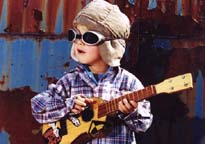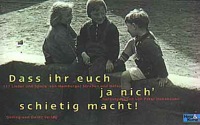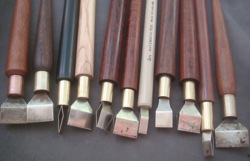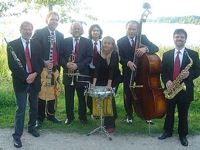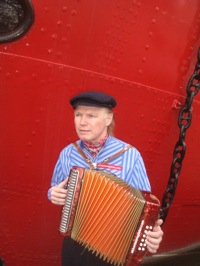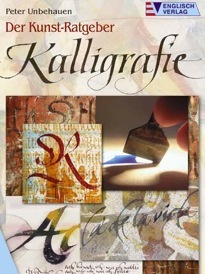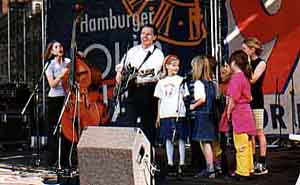This
page contains 3 articles:
- History of Fehmarn
- Fehmarn during
the harvest
- Rauert of Fehmarn
The
Fehmarn Cousins Newsletter Issue #18, Oct., 2001
During
our recent trip to Fehmarn (May - June 2001), Dorothy Gossel arranged
for our tour group to visit the St. Petri Church in Landkirchen.
Karin
Kleingarn, a local historian on the island, gave us a tour of the Church.
The
following narration is the presentation she gave to our group.
We
found this very interesting and wanted to share it with others through
this Website.
Tressie
Hughes Welcome to our church of Saint Petri. A few hundred years ago the
Danish King "Erik the Pommer" set foot in this church. The Organ started
playing by itself and blood sweated down from the crown of Maria. What
had happened? There existed between the Danish King and the Counts of
Holstein much discontent for centuries. In 1420 King Erik wanted to occupy
the Isle of Fehmarn. He was unsuccessful in landing on the island twice.
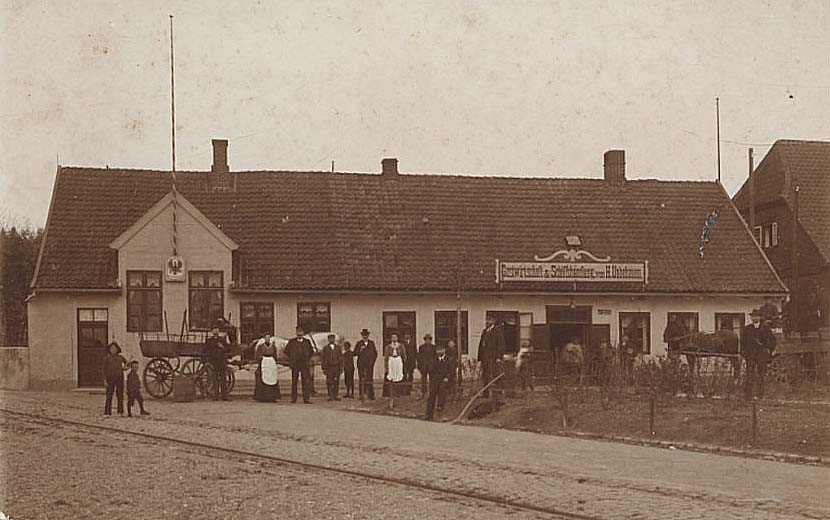
Fehmarn Burgstaaken Gastwirtschaft Unbehauen Aufnahme 1920
The inhabitants ridiculed the Danish army by standing at the coast showing
their backsides and shouting: "If a cow can spin silk, then King Erik
shall win our land!" Due to that, the Danish got furious. Finally, King
Erik succeeded in landing on the island by using a trick. Now a terrible
massacre began, People were tortured and killed, buildings were set on
fire, and churches were devastated. This incident is the saddest tragedy
in the history of the Isle of Fehmarn.
Even
today people tell the legend of this horrible tragedy in this way: At
last, while the whole island was burning, King Erik came in this church.
Somehow the organ started playing by itself and Maria's crown sweated
blood, Now the King got anxious. He changed his mind and immediately stopped
the massacre, he then shouted: "If there is anyone in this church, he
shall stay alive." Thereupon a man came from behind the altar. His name
was "Mackeprang".
The
Pope excommunicated King Erik who was troubled by his bad conscience.
So he made a pilgrimage to the Holy Grail in Jerusalem. The legend tells
about three people who survived the massacre: Mackeprang, Witt and Rauert.
In
1424 The Count of Holstein got Fehmarn back. The Count called for settlers.
They didn't have to pay taxes for five years. Now the Count couldn't pay
the soldiers at their time of dismissal. He had to borrow money from Lubeck.
At this time Lubeck had been a rich town. The Count of Holstein gave the
Isle of Fehmarn to Lubeck as security. This was during 1435 to 1490. Lubeck's
rule over Fehmarn was very beneficial for the island trade, industry,
shipping and businesses developed.
In
1580 the Danish King Friedrich II had a meeting on the isle of Funen which
is a Danish island located north of Fehmarn. The King gave the Isle of
Fehmarn a banner: a golden Danish crown in blue damask. Today we interpret
our flag as: "Our Fehmarn is so beautiful, it's the crown of the blue
Baltic Sea!" In 1617 Count Friedrich legislated in his "Confirmation of
Liberty" that the aristocracy should never be allowed to buy land or buildings
on Fehmarn. He protected the privileges and freedoms of the inhabitants.
Due to that legislation Fehmarn developed differently from the rest of
Holstein.

Einer der 66 Schemel in der Kirche St. Petri in Landkirchen/Fehmarn: Elsche Unbehauen 1701
One of the 66 stools in the Church of St. Peter in Landkirchen/Fehmarn: Elsche Unbehauen 1701
Una de las 66 sillas en la Iglesia de San Pedro en Landkirchen/Fehmarn: Elsche Unbehauen 1701
Fortunately, the inhabitants of Fehmarn never became serfs like inhabitants
of Grossenbrode. Serfs couldn't change their jobs; they also could neither
move to another place nor marry without permission of their ruler. They
lived like slaves.
The
Isle of Fehmarn remained free! The ruler was the Count of Schleswig and
he also was the King of Denmark. Fehmarn was a part of Schleswig but not
a Danish island. The governor (Landvogt) of Fehmarn was a representative
of the Danish king who controlled taxes etc.
The
administration of justice, he represented together with 3 elected honorary
officials, 3 chamberlains and 18 judges. They were the top of the jurisdiction
of the Isle of Fehmarn. They could even decide about life or death, together
with the governor and the King's Counsel (secretary, scholar, lawyer).
Let's have a look at this plaque. Here you can see the governor (Landvogt)
Peter Witte. He was a merchant shipper. Once he was caught in a storm
in the Baltic Sea. He prayed to God and vowed if God would save him, he
would support to the best of his ability the people of the Isle of Fehmarn.
And so he did. Here you see another governor (Landvogt): Jurgen Gossel.
He is an ancestor of Dorothee's husband. Gossel means in German a gosling.
It's the heraldic animal of the Gossel family. I will tell you about the
text. It's the life of Jurgen Gossel, born in 1606 here on the Isle of
Fehmarn. In 1635 he married Catharina Brandt. Her father was a judge and
a noble merchant. They had 10 children, 6 of them died, the name of the
others were Jurgen, Heinrichm, Catharina and Anna. In 1642 he was elected
a judge.
In
1645 he became governor (Landvogt). In 1651 his wife died. In 1652 he
married Anna Mackeprang. Her father was Chamberlain and a big landowner.
She died in 1653. In 1654 he married for the third time to Gerdrut, widow
of the judge Karsten Folff, She died in 1667. In 1669 he married Anna
Bentem. They had one daughter. Here we look at Jakob Mackeprang. He was
the son-in-law of Jurgen Gossel. He was born in 1633. In 1660 he married
Catharian Gossel. In 1686 he was elected to be a judge. His son, also
named Jakob, was chamberlain.
He
donated the altar together with his wife Emerentia, a daughter of the
Landvogt Peter Witte. What's over here? The name of this chest is "Landesblock".
It's as old as our church, more than 700 years.
The
most important and valuable documents as well as seals were garnered in
here. You see three locks, each lock requiring a separate key. Each chamberlain
had one key, so no one could go alone to retrieve the documents. This
was how it was done: After the prayer-bell had rung at noon, the oldest
chamberlain stepped to the chest and spoke the words: "Help God!" Then
all three chamberlains prayed together: "God you alone are endless. You
know everything there is. God you are able to see everything that will
happen." Now let's look at the model ship. For a long time this model
ship has been hanging here. After the renovation the model was put behind
glass.
Through
the mirror you are able to see a painting below the ship. This painting
shows how people imagined life under water. This model ship represents
a warship from Lubeck constructed in 1617 and was donated by the merchant
shippers. These pews belong to the "Vetterschaft der Mackeprangen und
Witten". In former times there was no pension, neither health nor social
insurance. Therefore families are united by nepotism. They promised to
be there for each other in misery and hardship.
There were many nepotisms but the one that remains is the Mackeprang-Witt,
which is placed here. Every male by the name Mackeprang or Witt whose
ancestors are from Fehmarn can become a member, but only men.
At his induction he has to promise that he will give 5% of his fortune
to nepotism if he dies without a legitimate heir. Formerly this money
was used to support widows and orphans. Landvogt Peter Witte donated a
silver tumbler to the nepotism, which still exists. Once a year all members
of the nepotism come together for a meeting. If one of them dies 4 Mackeprangs
and 4 Witts will carry him to the grave. The first chairperson is the
spokesman; he is the one who knows all the rules.
The
nepotism is so old that in the beginning the rules used to be delivered
verbally. In the 19th century, the Danish kingdom wanted to make the dukedom
Schleswig, which included Fehmarn, a part of the Danish kingdom. In March
of 1848 the inhabitants of Schleswig-Holstein decided to establish their
own government in the town of Kiel. In the whole district and on Fehmarn
the people rejoiced. They prepared an offensive against the Danish. Armed
conflicts followed and in 1851 Danish troops occupied Fehmarn. Patriots
in the whole area of Schleswig-Holstein had to leave their homeland. Many
of them immigrated to the USA.
The
Danish government didn't give up its plans to take over Fehmarn. In 1864
a war began. Prussia and Austria helped Schleswig-Holstein. Prussian troops
had landed on the island and took the Danish soldiers by surprise. In
the end Schleswig-Holstein became a province of Prussia. Many people were
very disappointed by that. They wanted a government of their own. In 1871
the Prussian king was crowned as the emperor of the new German empire.
Some
old traditions and rights of the community of the Isle of Fehmarn were
lost. But most of the people were satisfied. Presented by Karin Kleingarn
in the St Petri church in Landkircken The old Fehmarn large-scale Farmer's
house. Niendorf, on the island Fehmarn had until 1920 an old Fehmarn large-scale
farmer's house [Fehmarn Grossbauernhaus], dating back to the 16th century.
It was located on the lot Nr. 8. - Ownership belonging in 1834 to Hans
Ehler, in 1846 to H. Voderberg, in 1885 to Hinrich Wohler, in 1891 to
Matthaeus Kunz. In the periodical "Heimat" of 1937, number 12 Theodor
Moeller reports the following:
One
of the most charming Fehmarn large farmer's estates [large-scale enterprise]
'Grossbauernhaus', stood in Niendorf, Fehmarn. After advise in 1914, to
preserve the building and turn it into a museum, all offers were rejected.
Houses of the same antiquated and similar artistic value were found in
Avendorf, Fehmarn. That building was erected in 1787. Much older was the
property owned by Hans Buegge in Wulfen, as Building memorial exceptionally
valuable; but both were torn down.
More mention about the farm houses: Stately buildings from the 16th century
had large and wide windows with 2 - 3 posts and many small window-panes
with leaden enclosures. The two windows facing the large front entrance
door, are set higher than the other windows. The outer windows are set
very low. This great variety, with peculiar effect, stems from the uneven
ceiling height in the center arch or nave of the building, [compared to
a cathedral ceiling]. The heavy oak beams were oiled [treated w. carbolic
oils](Phenol), as to preserve and protect the wood, this caused the beams
to turn very dark.
The
framework [of the timber-framed-houses] were often decorated with inlaid
red stone in ornate fashion. The roofing protruded forward, the top-piece
[hood] and crescent show simple well-formed moldings. Above these a row
of carved fan-shaped ornamentations.
The ornamented gable end [Giebelspiess], which mostly displays an artistically
forged roof-marking with a weather vane, carved semicircular crescents,
generally representing the heavenly bodies, like the sun, stars and the
moon, which add to the charm of the gable. Such houses used to be no rarity
on the island Fehmarn, because over 300 years ago there were large-estate
farmers 'Grossbauern' who invested so much in their homes, at times as
majestic as estates owned by nobility in Holstein. In the beginning it
was a single house, after growing expansion, they were built larger. Later
barns were built.
Already
in the 16th century the Fehmarn wheat was such a preferred export commodity
and shipped to France, Italy, Spain and other countries. A large-scale
farmer [Grossbauer], around 1610, had on the average about 21 horses,
6 cows, 20 young cattle and oxen, 25 pigs and 50 sheep. Living rooms,
sleeping rooms, kitchen and chambers, built-in oven and storage chambers
were located on both sides of the great hall [called Grotdoens]. On the
small and lower side were the stables, where the animals were kept. The
daily living quarters, also called the smaller hall [or Luettdoens], had
a window toward the street, also called the front room [Voerstuv].
Toward
the back is the extension of the great hall called the (luettdoens), with
the same width and height as the great hall. The saal, used to be called
great hall or [Grotdoens] corresponds to situation, interior decoration
and used as festivity hall, as well as storage place for trunks, boxes
and wardrobes, compared to the living quarters [Pesel] of the farmhouses
in Dithmarschen. This shows an introduced art that may have been previously
brought by emigrants from Dithmarschen to Fehmarn. With great stubbornness
did age-old custom and antiquity linger here for centuries. Not only in
the farm houses, but also in the old bourgeois homes in the town of Burg.
Also here we find the same suggested floor plan with great hall,[Diele],
and festivity hall [Saal] or (Pesel) in the center, and living quarters
on the sides.
The
house in Niendorf still showed in all parts these characteristics of the
old Fehmarn single farm house. It was a large building with many different
rooms, as was necessary to maintain a farm of about 44 ha (108.7284 acres).
With a length of 27 Meter (88.5816 feet) and a width of 14 Meter (45.9312
feet) as to amount to about 380 square meter (4090.2820 sq. feet). Yet
later such a building was not adequate anymore and barns were added. In
the only 3 Meter (9.8424 feet) wide offsides, beside the great entrance
door was the small hall or [Luetdoens.] Folled by the kitchen, chambers
[Kamer] with bake room and oven.
The
other side had several different chambers and stalls for the animals.
Also next to the great hall, called [Grootdoens] were many different chambers,
two on each side. All together there were 10 rooms or chambers. Voluminous
and manifold was the economic life in the house; plain and simple were
the daily living requirements, for a room of 10 square meter (107.639
sq. ft.) was adequate.
The
great hall [Grotdoens] had the same width as the small hall [Diele or
Luettdoens] of 7 Meter (22.9656 ft.), of the 12 partitions, the length
of the house, this took up 4 partitions (which amounts to 9 Meter (29.5272
ft). It was 6 times as large as the daily living room. The floor was as
all other floors, made of tampered clay. This room was used for storage
of many household goods, like wardrobes and trunks etc. Weddings and funeral
festivities were held here.
They
had rare old murals on the walls and the wooden ceilings. Concentrated
halve moons, down- and upwards opening in precision. Perhaps telling of
the same meaning as the carved halve crescents decorating the gable area.
The house offered a great amount of stimulations. To restore it to it's
original being, with old household goods and furniture, trunks and wardrobes
and to make it into a Museum, was for Fehmarn too costly. But instead
torn down, as last witness of the disappearing Middle-ages.
The farmhouse, in spite of it's age between 3 - 400 year's, was still
stable in it's basic core. In 1920, after the tearing down of some farmhouses,
some pillars and beams from the Luettdoens and the Grotdoens made long
journeys, they went all the way to Hamburg as well as over the big pond
[overseas] toward North America, and what wasn't good for Fehmarn anymore,
became respected, and at times decorating some Homes of a dollar-millionaire
in a new form, as a Lower Saxony Hall or a Holstein Farmer's Vestibule,
[Bauernstube].
Sumitted
by: Dieter Klahn
Translated into English by: Else Buegge-Wood 3096-1A Maryland Ave. Columbus,
OHIO-USA 43209 - Phone: (614) 237-4972
- Fehmarn during
the harvest
When
I was a small child I remember the harvest in the small village of Wulfen.
All the people from the village worked together. The children were allowed
to go to the fields, where the people had shocked the wheat and all kind
of grain; we would ride on the horses from one heap of sheaves to the
other. The men would load the sheaves unto the wagon and another man would
pack them in the right place. Grandfather would say: "Be careful, that
you don't fall off the horse. But we would be especially careful. The
horses were put into position, all the different harnesses and yokes had
to be put on them.
We
had to learn to do that as a child. There was a little responsibility
for everybody. It made you very proud when you could help at such an important
job. The ladies sent some special hot cakes to the farm and everybody
was invited to eat. That was so much fun. The men would drink their "Erntebeer"
harvest beer and the food was plentiful. When the last load of grain was
hauled there was a celebration. The ladies made a beautiful wreath with
lots of colorful ribbons.
On
the wagon a man with his button-Box "Quetsche" or accordion sat with other
people on the last wagon of grain and they sang. When they got back to
the village they hung the wreath on the barn door, so all people could
see, that farmer has all his grain in the barn and the party can begin.
The ladies already sent some special hot cakes to the farm and everybody
is invited to eat. That was so much fun. The men would drink their "Erntebeer"
harvest beer and all were welcome.
On
Fehmarn during the harvest. By: E. Buegge-Wood.
From
the book -Rauert of Fehmarn- compiled by Ken Harders of Grand Island Nebraska.
(The
following are some informative paragraphs of history of Fehmarn from the
beginning of his book)
FEHMARN
The
tiny island of Fehmarn is situated in the Baltic Sea between Germany and
Denmark. Its strategic position between mainland Europe and Scandinavia
meant that Its history at times has been turbulent. Originally settled
by Slavs in the eighth century, the twelfth century saw a wave of Christianization
and Germanization sweep the area. German has been spoken from this time.
Although there have been strong links both geographically and politically
with Denmark, only a few leading citizens would have spoken Danish. Certainly
our ancestors would have been German speaking. Fehmarn Is flat and small
(8 x 12.5 miles) with a population to- day of 14,000. The capital Burg,
established in the early thirteenth century contains half the Island's
population. The last century has seen a thirty percent increase in Fehmarn's
population. This however occurred entirely within the city of Burg. This
stagnant population growth means that the forty villages scattered throughout
the island have been able to retain much of their character from previous
centuries. In these villages, already established by the early 1600's,
little development has occurred in the past fifty years and approximately
thirty-five percent of the homes still standing are from pre 1850. Each
possess common features; a village pond, cobbled streets, huge brick barns
and clusters of trees. A number of these villages are coastal and the
Island also boasts a small fishing fleet. Between the villages fields
under cultivation and pastures for grazing exist much as they have for
centuries.
THE
FOURTEENTH CENTURY
At
the time our story begins, the end of the fourteenth century, Fehmarn
was prospering. Although there were forest of birch, oak, and ash, much
of the land had been made arable and the island boasted a population of
4000. In 1420 disaster struck Fehmarn. The Danish King, Erik der Pommer,
arriving with his army In four hundred ships, ravaged the island. The
inhabitants were put to death, legend having it that only three survived.
Villages were laid to ruin, forests burnt down. Much of the island was
left a deserted wasteland, awaiting a fresh beginning.
DITHMARSCHEN
Directly
to the west of Fehmarn on the North Sea, lies the region of Dithmarschen.
Flat and marshy, the land cn be only partially cultivated, and is known
for its numerous ditches, dikes and ponds. In early fifteenth century
Germany however, Dithmarschen was certainly unusual. In the midst of a
medieval society where serfdom was the norm, In 1404 the region had thrown
off the control of the Count of Holstein and existed as a state of free
farmers. However, an increasing population was putting pressure on the
meager land and many began to look further afield. Those who were to migrate
would carry within them a high value of freedom and independence.
All
Rauert's of Fehmarn, and it is believed all those in the United States,
can be traced back Dithmarschan, Germany.
The
name Rauert has been common for centuries and is believed to have originated
In West Friesland, now northern Holland. Originally it was used only as
a first name and had several different spellings and pronunciations.
It
was spelled Rauwert, Rauwerdt, Reuwert, Rauvert, Rawert, etc. and ended
up being spelled Rauert. It is believed that the different ways of spelling
Rauert Is due to the way people pronounced its due to different dialects
and areas of the country.
The
name Rauert closely resembles the name Robert, which means Advisor or
Leader.
THE
FIRST PIONEER In 1365 a man called Witte of Dithmarschen christened his
infant son Rauert. As this name had not previously appeared in the region
it seems likely he was named after a maternal grandfather or uncle of
a Frisian mother. In accordance with the Dithmarschen custom of patronymic
naming, the father's Christian name now became the child's surname, hence
Rauert Witte. RAUERT WITTE born: about 1365 in Dithmarachen, Germany married:
about 1389 in Dithmarschen (wife's name unknown) died: after 1423 at Presen,
Fehmarn (at least 58 years of age) Children: (1) Hans ? Rauert (2) Hinrich
Rauert (3) Tewes Rauert (4) Hans Rauert (5) Johann Witte (6) Tank (Mar)
Witte (7) Drewes Witte (8) Rauert Witte Occupation: Farmer in Dithmarschen
before 1423, at Presen, Fehmarn after 1423. In 1420, the year of the destruction
of Fehmarn, Rauert Witte was 55 years old. Like many others throughout
Germany, he was attracted by the opportunity to win, with hard work, a
new wealth on the now to be rebuilt island. In 1423 the whole family immigrated
to Fehmarn taking up land at Presen, today a tiny village near the west
coast. This period of reconstruction marked the beginning of a new period
of prosperity for the island. In time the island recovered. The forests
were gone, but wheat flourished again. Villages and farms were rebuilt.
The worst period in Fehmarn's history was over.
THE
SECOND GENERATION
Our
knowledge of further generations of the family comes from the old Rauert
Cousinhood Book now kept at the Peter Wiepert Museum in Burg, Fehmarn.
Other documents were found in the State Archives, Gottorf, Schleswig-Holstein
Archives and Luebeck City Archives. Of Rauert Witte's eight sons, the
four oldest had the surname Rauert which was the custom of patronymic
naming in Dithmarschen. The four younger sons carried the surname Witte,
which was the custom on Fehmarn. Whether the four younger sons were born
at Fehmarn or Dithmarschen is unclear. So the families Rauert and Witte
of Fehmarn have the same ancestors. The eight sons took up land throughout
the island. The eldest son, probably called Hans Rauert, took possession
of the family farm at Presen. From the four sons with the surname Rauert
came all of the Rauert's who live on Fehmarn,
THE
RAUERT CLAN
The
clans or 'Cousinhoods' on Fehmarn were associations of families with their
own laws, providing mutual help and protection and fostering social life.
The Rauert Cousinhood was formed during this period (around 1460) and
continued for almost four hundred years, until its dissolution in 1833.
Its formation can be traced to a single event. One of the eight sons of
Rauert Witte committed murder and was sentenced to death. However, according
to Fehmarn law, a murderer's freedom could be bought by his family. This
was attempted by his seven brothers. Nonetheless, when they had gathered
enough money, the murderer refused his freedom and accepted the death
sentence. He requested that his brothers keep the money to enable the
formation of a clan, which required a special common wealth. Part of this
money was to be used to free a cousin in a similar situation and the interest
on the remaining fortune was to be used annually to finance a clan reunion
to celebrate freedom and happiness.
THE RAUERT COUSINHOOD BOOK The Rauert Cousinhood continued to meet regularly,
and after the first one hundred years decided to record that which had
been passed down verbally. Das Rauertsche Vetterschaftsbuch (Rauert Cousinhood
Book) came into existence on July 29, 1563. Not only did it (record the
statutes of the cousinhood, but also the stories of Rauert Witte's migration
and the founding of the cousinhood. Also included was a financial statement
and the yearly admission of young cousins. In 1640 a cousin carried this
book off to Denmark in an attempt to blackmail the family (it also contained
debenture bonds).
The
family never gave in to hid demands and the blackmailer finally allowed
parts of the book to be copied. The first book had five parts from 1563
and three more from 1605. In 1563 several different groups of Rauert's
and Witte's met in Burg and tried to trace their history back to the first
ancestors on Fehmarn and found that the Clan existed for at least three
or four generations prior to 1563. A new Cousinhood Book began in 1653,
which shows all the names of relatives from 1653 on and it shows that
they go back to the same four original ancestors. These entries are believed
to be true. Many other documents have surfaced and have been checked for
authenticity, that one can believe what the old book says. This book is
today housed in the Burg Museum and is a valuable genealogical tool. It
contains material in much greater details than that found in Parish Registers,
with family trees, place of residence and financial statements.
TONNIES
RAUERT born: 1585 at Presen, Fehmarn married: (#1)- by 1618 at Bannesdorf
(wife's surname was Lafrenz) (#2)- 1621 (Tolke Unbehauen)
died: June 29, 1644 at the Battle of Maienleuchte near Puttgarden occupation:
farmer In Presen After seven generations of Rauert's had lived on Fehmarn,
Toennies Rauert was born-nearly two centuries after Rauert Witte. After
two hundred years of peace and prosperity the tranquillity of the island
was to be shattered with a vengeance during the 1600's. Toennies and his
family were to live through flood, hail, plague, and war. A plaque on
the pillar of the St. Nicolaus Church in Burg tells of nature's furor:
-Remembrance of the punishment of God on February 10, 1625, here and over
neighboring areas there was a great flood in which many people and beasts
were drowned and much damage done in general.
On June 18, 1625, a terrible hail fell which caused great damage to the
corn.- At this time disease was little understood and hygiene left much
to he desired. Cattle were allowed to roam the streets, dung heaps could
be found within residential areas and garbage was thrown into the streets.
The church plaque goes on the record of the devastating effects of an
outbreak of plague four years later: -The year 1629, a great plague of
which, from the 28th of May to the 11th of October, In 19 weeks, 646 people
died, 52 from the East parish, 594 from the city and amongst them all
three preachers.- During this period there were also a large number of
bankruptcies. Many farming businesses collapsed and were bought up by
farmers wishing to consolidate their holdings. In this way the conspicuously
large farms and the striking prosperity of their agriculture came into
being.
THE THIRTY YEARS WAR
The
Fehmarners must have heaved a sigh of relief as the devastating Thirty
Years War seemingly passed them by. By the end of the war Germany lay
in ruins. Church buildings were burned and whole districts were utterly
waste, wild and uninhabited. One third of the population was killed, and
those who survived were often destitute. Countries were left crippled
by debt, staggering under the enormous cost this war entailed. Domination
of the Baltic, at this time far more important than either the Mediterranean
or the Atlantic offered a solution. Those that conquered Baltic harbours
and controlled sufficient surrounding land would also be in a position
to tax the Baltic trade. Sweden was to rise to the challenge.
THE
BATTLE OF MARIENLEUTE
On
June 29, 1644, In the concluding stages of the Thirty Years War, Sweden
invaded Fehmarn. Landing between Puttgarden and Presen the ships first
bombed the islands before four hundred troops disembarked. The whole island
was plundered. Although supported by Danish troops, the Fehmarners were
soon defeated. Seventy-six were killed, including Toennies Rauert, Weapons
were confiscated and a large booty, including 809 horses, 1000 tons of
wheat and, 20,000 Taler in reparations was demanded. The Fehmarners were
finally saved by the arrival of the Danish King, Christian IV, and his
navy. The Swedes put to flight, but not before the Danish King was badly
injured in battle, an event today still mentioned in the Danish national
anthem.
FEHMARN'S POLITICAL SITUATION
The political climate on Fehmarn and neighboring Schleswig-Holstein in
the early to mid nineteenth century was far from stable. In fact so complex
were the events, that the debate over this region formed part of the British
Foreign Service exams at the turn of the Century. If asked his nationality,
a Fehmarner would have replied-. -I am a German fellow, but a Danish subject.-
Although belonging to the German Confederacy, Fehmarn was also a duchy
ruled by the Danish King (but not part of Denmark itself) - a result of
a treaty signed in 1460. In 1460 the Count of Oldenburg was chosen by
Schleswig-Holstein (and therefore Fehmarn) to be their Duke. Count Christian
however, was to become Christian I, king of Denmark. For the following
four hundred years Fehmarn was to be a personal duchy of the king of Denmark,
but not of Denmark itself, a situation finally so involved and precarious
as to have Palmerston, the nineteenth century English statesman claiming
that -... only three men really understand the complexities of the problem;
one of them had died, another had gone crazy, and the third had forgotten
it all.- Although supported by Denmark in times of need (I. e. the 1644
Battle of Marienleute), the population of Fehmarn and neighboring Holstein
was almost wholly German in speech, character and outlook. In 1848 a Danish
nationalistic movement attempted to annex Schleswig-Holstein to Denmark
proper.
The
people revolted. A wave of nationalism was sweeping across Europe, stirring
up feelings within Fehmarn that they were Germans and wished to rule themselves.
With the aid of Prussia, Danish ambitions were halted. However, Prussia
then withdrew in the face of European opposition to their expansion into
the Baltic. In 1852 Prussia signed an armistice with Denmark, agreeing
to withdraw troops. Effectively the fate of the duchies was left undecided.
This
act was very widely regarded by German patriots as a betrayal of the national
cause, and many considered that Prussia had acted out of self-interest,
hoping to annex the duchies to itself rather than to support their independence.
A wave of resentment against Prussia followed. Fehmarn, now basically
left to the mercy of Denmark, was again invaded, despite the violent resistance
of the people. Treated as conquered territory until Prussia again invaded
in 1864, the following twelve years were ones of repression by the Danish
government.
The FEHMARN GENEALOGY Site Created using Microsoft Frontpage and maintained by: John Kostick, 131 NE 172nd Street, Miami, FL 33162

|




